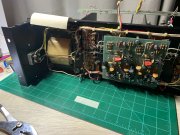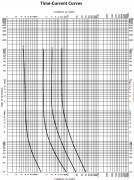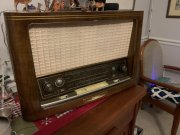BlueCrab
Journeyman
- Joined
- Nov 10, 2019
- Messages
- 230
I'm beginning a WOPL update for this old PL400 (and before I get it in the ear from WOPL Sniffer about why I didn't do it for a PL700, it's because I choose to  ). This one is just starting to suffer from corrosion on all the hardware and the transformer, so first step is to tear it apart and treat that and replace the hardware. Looks like this PL400 was treated about 20 years ago - some of the electrolytic caps on the PL14 card have date codes from the mid 90's.
). This one is just starting to suffer from corrosion on all the hardware and the transformer, so first step is to tear it apart and treat that and replace the hardware. Looks like this PL400 was treated about 20 years ago - some of the electrolytic caps on the PL14 card have date codes from the mid 90's.
One of the questions I have is, has anyone tried installing panel mount circuit breakers instead of the fuse holders? I plan to replace the AGX fuse holders anyhow, but it would be nice to use CBs instead, particularly for the AC power where it could operate as a poor man's on/off switch.
One of the questions I have is, has anyone tried installing panel mount circuit breakers instead of the fuse holders? I plan to replace the AGX fuse holders anyhow, but it would be nice to use CBs instead, particularly for the AC power where it could operate as a poor man's on/off switch.














